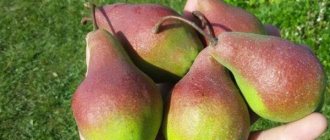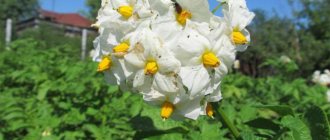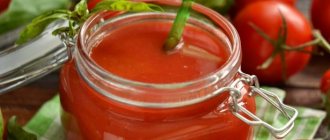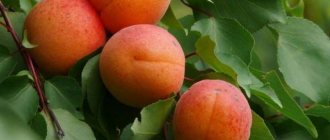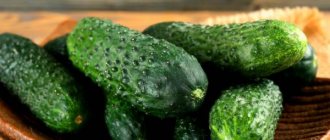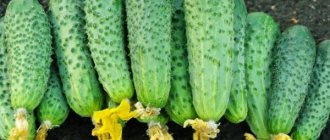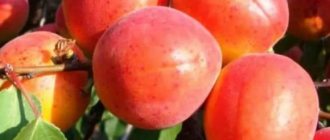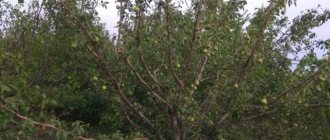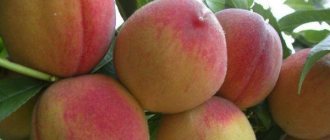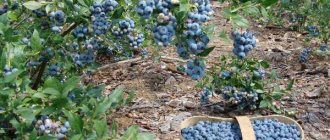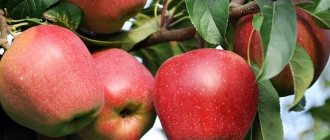Perhaps almost every amateur gardener has dreamed of a peach tree on his plot. However, the peculiarities of its cultivation made it possible to do this only in the southern regions of the country. But breeders made dreams come true, and today there are many varieties of peach that differ in ripening time, taste, frost resistance and peach shape. Below we will look at the best varieties of peaches.
Ripen early
Early ripening peaches have pale yellow flesh with a pronounced sugary taste. The fruits begin to ripen by the end of June and continue to ripen until the 20th of July.
Fluffy early
Description of the tree:
- height less than 3 m;
- wide oval;
- branched;
- pink flowers.
Fruit characteristics:
- weight up to 100 g;
- wide oval;
- the peel is greenish in color with a purple blush;
- sugary pulp with dense fibers;
- small bone.
Purpose: dining room. It has an average yield and fairly weak immunity to sub-zero temperatures and frosts. Also susceptible to fungal diseases.
Greasboro
Description of the tree:
- massive;
- branched;
- oblong;
- large inflorescences.
Fruit characteristics:
- weighty;
- oval;
- thick peel;
- pale green with purple blush;
- tasty, sugary and fibrous pulp;
- pleasant refreshing aroma.
Purpose: dining room. It has high immunity to frost, rich yield and memorable taste. In the absence of proper care, the leaves become curled. The fruits are not transportable.
Dagestan gold
Description of the tree:
- height less than 3 m;
- spherical crown;
- branched;
- thick.
Fruit characteristics:
- oval;
- oblong;
- weight no more than 100 g;
- yellowish tint with carmine splashes;
- low density peel;
- small bone;
- astringent pulp with strongly perceptible fibers.
The purpose is universal. It has a low yield, but it is also characterized by fairly good immunity to frost, various diseases and harmful insects.
Morettini's favorite
Description of the tree:
- height not less than 3 m;
- branched;
- bell-shaped flowers.
Fruit characteristics:
- spherical;
- high-density peel of a yellowish tint with a crimson blush;
- the most delicate beige pulp;
- medium fiber,
- juicy and aromatic,
- small bone.
The purpose is universal. It has high immunity to frost and low temperatures. Gives a stable and abundant harvest. Susceptible to fungal infections, in particular moniliosis.
Kyiv early
Description of the tree:
- miniature;
- spherical;
- low crown density;
- branched;
- height up to 2 m.
Fruit characteristics:
- sugary fibrous pulp;
- astringent consistency;
- loose peel of a pale beige color with a scarlet blush;
- spherical;
- weight up to 110 g;
- small bone.
The purpose is universal. It has high immunity to frost and diseases. A bountiful harvest. Susceptible to leaf curl. The pulp is practically inseparable from the peel.
White Swan
Description of the tree:
- height no more than 3 m;
- spherical;
- branched.
Fruit characteristics:
- weighty;
- weight no more than 200 g;
- wide oval;
- creamy peel with scarlet blush;
- whitish pulp with weak fibrousness;
- pleasant honey aroma;
- small bone.
The purpose is universal. It has high immunity to dry weather and frost. Practically not susceptible to fungal diseases. The fruits have fairly low transportability.
Redhaven
Description of the tree:
- height up to 5 m;
- spherical crown;
- dark green foliage;
- medium sized flowers.
Fruit characteristics:
- weight from 150 to 200 g;
- oval;
- yellowish-red hue;
- high density peel;
- fibrous texture;
- pointed bone.
The purpose is universal. Suitable for preservation. Rich and stable harvest. Has high immunity to frost. The fruits are transportable. Susceptible to curl and fungal diseases.
Collection and processing of fruits
We recommend reading our other articles
- Mulching strawberries
- African swine fever
- Vietnamese melon
- Drip tape
Collection and processing
Ripening of Golden Moscow peaches occurs around the first days of August. Already a three-year-old tree can produce a good, full harvest. Of course, it will probably not be possible to collect several buckets of fruit due to the fact that there are simply not many branches and the tree is small. But, as a rule, already at 3 years the peach is “loaded” with fruits and the harvest is considerable, about 6-8 kg. An adult tree can produce up to 50 kg of harvest per season.
The Golden Moscow peach can be eaten raw or processed. It is good for compotes, mousses, desserts, and purees. Housewives often make jam from the slices, but they do not hold their shape in jars, so it is recommended to take half-ripe fruits for jam, and there is never a guarantee that the slices will not disintegrate during cooking.
Medium ripening
Mid-ripening varieties of peaches most often ripen around mid-August and can continue until the end of September. Fruiting begins somewhere in the 3-4th year of planting.
Stavropol pink
Description of the tree:
- not branched;
- height no more than 4 m;
- massive leaves;
- miniature purple inflorescences.
Fruit characteristics:
- whitish fibrous pulp;
- round shape;
- loose pale green peel with a scarlet blush;
- sour aftertaste;
- a small seed of a greenish tint.
Purpose: dining room. Gives a rich harvest. Highly resistant to low temperatures. Susceptible to fungal diseases. Slowing fruit growth during drought. Constant thinning is necessary.
Ambassador of Peace
Description of the tree:
- bell-shaped flowers;
- branched;
- lush rounded crown.
Fruit characteristics:
- yellowish flesh;
- dense, pronounced fibers;
- weight reaches 160 g;
- round;
- large bone, difficult to separate;
- delicate sugary aftertaste.
Purpose: dining room. High immunity to low temperatures and resistance to diseases and harmful insects. A bountiful harvest. Peaches tolerate transportation well and have a long shelf life.
Hryvnia
Description of the tree:
- vigorous;
- spherical;
- height less than 3 m;
- branched.
Fruit characteristics:
- small;
- weight reaches 90 g;
- yellowish tint with a velvety texture;
- juicy pulp;
- small bone.
Purpose: dining room. High immunity to low temperatures and diseases (especially powdery mildew). Peaches tolerate long-term transportation well. With proper care, it begins to bear fruit ahead of schedule.
Ruby Prince
Description of the tree:
- vigorous;
- slightly spreading crown;
- large leaves.
Fruit characteristics:
- weight can reach 170 g;
- ruby or burgundy hue;
- tart fibrous pulp;
- astringent aftertaste;
- spherical;
- The bone is practically not separated.
The purpose is universal. It has fairly good immunity to fungal infections and low temperatures. Long shelf life. Good presentation. Prone to curling. We do not tolerate drafts.
Fig peach
Description of the tree:
- height reaches 5 m;
- rose-shaped;
- branched;
- purple flowers reminiscent of rose hips;
- lanceolate leaves.
Fruit characteristics:
- disc-shaped;
- sugary and tart aftertaste;
- orange-red with a crimson blush;
- medium-thick peel;
- weight up to 170 g;
- a small bone, practically inseparable from the pulp.
The purpose of the Fig peach is for table use. It has low immunity to frost and fungal infections. The fruits are not transportable, and they have a fairly short shelf life.
Cardinal
Description of the tree:
- thick round crown;
- small height;
- oblong leaves.
Fruit characteristics:
- weight no more than 150 g;
- orange, almost red hue;
- pronounced aroma;
- juicy fibrous pulp;
- sour aftertaste;
- an easily detachable small bone.
The purpose is universal. Average immunity to low temperatures. Needs insulation before frosts. The harvest is average. It is practically not susceptible to diseases (especially powdery mildew), and has excellent immunity to the harmful effects of insect pests.
Kremlin peach
Description of the tree:
- tall;
- branched;
- oval or rounded crown.
Fruit characteristics:
- orange hue with scarlet blush;
- weight up to 200 g;
- dense pulp;
- rounded;
- not pronounced juiciness;
- sugary soft taste;
- thin peel;
- an easily detachable small bone.
Purpose: dining room. This variety adapts perfectly to any temperature and is highly resistant to various diseases. Demanding about feeding. A bountiful harvest. Reacts negatively to waterlogging.
Golden Moscow
Description of the tree:
- height reaches 3 m;
- spherical crown;
- pink flowers;
- lanceolate leaves.
Fruit characteristics:
- yellowish-beige pulp;
- high juice content;
- pronounced sugary aftertaste;
- small bone, easily separated;
- dense peel.
The purpose is universal. Rich and regular harvest. High immunity to frost. Excellent presentation. The fruits tolerate transportation well. Immunity to fungal diseases, in particular, is not susceptible to powdery mildew.
Siberian
Description of the tree:
- height can reach 5.5 m;
- dense foliage;
- rounded crown.
Fruit characteristics:
- the most delicate juicy pulp;
- rounded;
- yellowish tint with pink blush;
- fresh honey aroma;
- easily detachable bone;
- weight up to 70 g.
The purpose is universal, perfect for preservation. Average but regular harvest. Highly resistant to low temperatures. Short shelf life (less than 14 days).
Donskoy
Description of the tree:
- rose-shaped;
- height up to 4 m;
- medium height;
- neat oval crown.
Fruit characteristics:
- weight up to 80 grams;
- creamy pulp;
- yellowish-scarlet peel;
- easily detachable bone;
- soft sugary aftertaste.
Purpose: conservation. Used for making jams and preserves. High resistance to frost. Abundant harvest. It is afraid of drought, so regular watering is required. Not susceptible to curling and fungal diseases.
Collins
Description of the tree:
- height no more than 3.5 m;
- spherical;
- green elongated leaves.
Fruit characteristics:
- weight up to 155 g;
- pale orange with scarlet blush;
- pronounced velvety;
- the bone is difficult to separate;
- fragrant.
The purpose is universal. The fruits are transportable and have a long shelf life. Practically not susceptible to fungal diseases. With poor care, the leaves curl. Demanding about feeding.
Saturn
Description of the tree:
- rose-shaped;
- branched;
- single flowers;
- small leaves;
- vigorous.
Fruit characteristics:
- weight reaches almost 100 g;
- disc-shaped;
- creamy shade;
- fibrous and astringent pulp;
- spicy taste;
- the bone is small.
Purpose: dining room. It has a fairly high immunity to frost. Average yield is typical. Peaches tolerate transportation well. High presentation.
Planting and subsequent care
Planting and care
The time for planting the Golden Moscow peach depends on the climate in the region. If we are talking about the southern regions, then autumn is suitable, if we are talking about the northern regions, then spring. This tree loves warmth and plenty of sunlight, so the planting area should be open, not darkened. It is advisable to choose sites on the south side.
A hole for planting is dug in 2-3 weeks. With a depth of a meter, it should be 60x70 cm in size. It is advisable to make a drainage of 5-10 cm to drain excess water. On the day of planting, humus mixed with soil is laid out on the bottom. Next, the tree is installed and sprinkled with soil on each side. It is important to ensure that the roots do not bend! After the hole is filled, the earth is compacted, watered with warm water and covered with a layer of straw or pine bark.
Interesting!
Peach Golden Moscow is recommended for everyone who does not like to treat trees with chemicals to increase productivity or to prevent pests and diseases. It is persistent and produces a good harvest, so treatments with any preparations are carried out very rarely!
- Watering is necessary once every 2 weeks. This is quite enough. Although it all depends on the type of soil and climate - the drier, the more water.
- No more than 4 feedings are carried out per season. The type of fertilizer can be taken at your discretion, but so that there is more nitrogen in the spring, phosphorus and potassium in the summer, and potassium in the fall.
- Treatment for pests is rarely carried out, since the tree does not often get sick. Treatment can be carried out with different substances, but it is recommended to use simple, folk tinctures from the moment of planting 2 times a year (spring and autumn). They are absolutely safe for both trees and humans and are very effective when it comes to prevention.
- Formative pruning is carried out either regularly (in spring and autumn) or as needed. Of course, gardeners recommend not to neglect it, but if there is no time, this will not cause the tree to bend. The main thing is to ensure that there are no sick or damaged pagons; they must be cut off every year, and the cut areas should be treated with garden pitch or iron sulfate!
- Peach Zolota Moscow can withstand cold down to -25 degrees, so it is not often insulated for the winter. Although mulch spread in the root zone will definitely not be bad. If there is an opportunity and desire, it is worth pouring a layer of humus, peat or compost into the root circle for the winter. These substances will not only insulate the earth, but will also overheat in the winter, and in the spring they will become a nutrient medium for the crop.
Late, frost-resistant varieties
Late varieties of peaches, which have fairly good tolerance to frost, ripen only by the beginning of autumn. These varieties can be harvested by the beginning of October.
Jaminat
Description of the tree:
- height less than 3 m;
- spherical;
- branched;
- dense foliage.
Fruit characteristics:
- elongated, oval;
- weight no more than 160 g;
- yellowish tint with a purple blush;
- pale orange flesh;
- strong peel;
- tart-sweet taste.
The purpose is universal. This variety is characterized by fairly high and regular yields. However, it has average immunity to low temperatures.
Elberta
Description of the tree:
- height less than 3 m;
- spherical;
- branched;
- olive leaves;
- bell-shaped flowers.
Fruit characteristics:
- weight up to 150 g;
- spherical, slightly elongated;
- bright orange with a pinkish blush;
- pale beige flesh;
- fibrous texture;
- tasty and aromatic;
- easily detachable large bone.
Purpose: dining room. This variety of peaches is susceptible to various diseases, but has high immunity to frost and low temperatures. Average yield.
Iranian late
Description of the tree:
- height less than 3 m;
- spherical;
- dense foliage.
Fruit characteristics:
- clingstone;
- yellowish peel with pink blush;
- delicate fibrous texture;
- Not a pronounced sweet taste.
Purpose: dining room. A bountiful harvest. It has average immunity to frost and sub-zero temperatures. Susceptible to fungal infections due to weak protective properties. The fruits are transportable.
Fury
Description of the tree:
- height less than 3 m;
- branched;
- thick, sloppy crown;
- pale green leaves.
Fruit characteristics:
- weighty;
- weight from 250 to 450 g;
- red peel;
- tender and sugary pulp;
- Small size bone, easy to separate.
Purpose: dining room. Has high immunity to low temperatures. High presentation. The fruits are transportable and have a long shelf life. Gives a rich harvest.
Frost
Description of the tree:
- height less than 3 m;
- not branched;
- spherical;
- leaves are oblong shaped.
Fruit characteristics:
- tart and sweet pulp;
- yellowish-orange hue;
- aftertaste with a hint of sourness;
- weight reaches 200 g;
- clingstone.
The purpose is universal. Not susceptible to leaf curl. Good immunity to various fungal infections and low temperatures. Excellent presentation. Average and regular harvest.
Veteran
Description of the tree:
- spherical;
- oval shaped leaves;
- height no more than 4 m;
- dense foliage;
- branched.
Fruit characteristics:
- spherical;
- weight reaches 180 g;
- yellow tint;
- watery pulp;
- sugary taste with a hint of sourness.
Purpose: dining room. It is highly resistant to frost. High and regular harvest. The fruits are transportable. Practically not susceptible to diseases. The harvest is average.
Champions of frost resistance
Those varieties of peaches that have the highest frost resistance ripen only in September. These varieties are harvested either by the end of the month or in mid-October.
Babylonian
Description of the tree:
- vigorous;
- rose-shaped;
- flowers of a lilac hue;
- not branched.
Fruit characteristics:
- weighty, weight can reach 300 g;
- yellowish flesh;
- dense fibrous texture;
- medium sized bone;
- sweet and sour taste;
- the bone is almost not separated.
The purpose is universal. Has high immunity to low temperatures. The fruits are transportable and have a fairly long shelf life. High yield.
Juicy
Description of the tree:
- rose-shaped;
- round crown;
- branched.
Fruit characteristics:
- beige-green peel;
- dense fibrous pulp;
- pronounced sourness;
- the bone does not come off.
Purpose: dining room. Peaches are transportable and have an attractive appearance. This variety is perfectly adapted to temperature changes.
Winter-hardy
Description of the tree:
- oval crown;
- branched;
- not dense foliage.
Fruit characteristics:
- small, weight barely reaches 80 g;
- cream-colored flesh with a yellowish blush;
- the bone is separated.
Purpose: dining room. This variety has weak immunity to dry weather, but tolerates low temperatures well. The fruits are transportable. Gives a high yield.
Reviews of peach Golden Moscow
Reviews about peach
Reviews from those who have already grown or are growing Golden Moscow peach varieties most accurately convey the characteristics of this species.
Anyuta Ivanova : “Peach Golden Moscow is above all praise! Juicy, sweet, aromatic, the stone is easy to separate - in general, no complaints! Everything you want to get from a peach is present in it!”
Evgeny Shishkanov : “Golden Moscow for me is a model of unpretentiousness. I pruned my 6-year-old tree only 2 times, and that was because the branches broke from the hurricane. If you give it a little time, the fruits grow very large and incredibly juicy, it’s even a pity to let them process it, so every summer, in August, all my children and grandchildren gather in the garden to get some fresh vitamins.”
Nastya Kutovaya : “I really love peaches, so I grow 5 varieties in my garden at once. Golden Moscow makes me very happy. In addition to requiring little maintenance (compared to other varieties), the tree produces large yields of delicious peaches.”
Cold-resistant varieties of peaches have recently been a gardeners' dream. But thanks to the efforts of breeders, modern peaches grow even in the northern regions. Such is the Moscow dwarf. Read on in the review to find out what this variety is.
Self-pollinating, self-fertile varieties
Self-pollinating varieties are extremely popular among gardeners. To increase fruiting, different varieties of trees are planted next to each other. Harvest occurs at the end of August.
Inca
Description of the tree:
- vigorous;
- thick oval crown;
- oblong leaves.
Fruit characteristics:
- weighty, weight reaches 180 g;
- orange with scarlet blush;
- dense watery texture;
- The pit is difficult to separate.
Purpose: dining room. Average yield. Peaches are transportable and have an attractive appearance. The variety is not susceptible to fungal infections. High immunity to sub-zero temperatures.
Volcano
Description of the tree:
- medium height;
- round crown;
- branched;
- not dense foliage.
Fruit characteristics:
- the pulp is yellowish with a pink blush;
- asymmetrical shape;
- small bone;
- tart taste with a hint of sourness.
The purpose is universal. Susceptible to leaf curl. Average immunity to sub-zero temperatures and frosts. The fruits are transportable and have an attractive appearance. Regular yield.
Harnas
Description of the tree:
- tall;
- spherical;
- dense foliage;
- dark greenish leaves.
Fruit characteristics:
- weight reaches 180 g;
- spherical;
- scarlet peel;
- dense fibrous texture;
- large bone;
- sugary tart aftertaste.
Purpose: dining room. The fruits tolerate transportation well. Rich and regular harvest. It is not fussy to care for and tolerates dry and hot weather well in the summer.
Golden Jubilee
Description of the tree:
- tall;
- oval, neat crown;
- branched.
Fruit characteristics:
- easily detachable bone;
- yellowish-red peel;
- juicy and sweet pulp;
- fibrous texture;
- weight reaches 150 g.
Purpose: dining room. Used for making dried fruits. A bountiful harvest. They do not tolerate transportation well, since the shelf life is no more than 6 days. High immunity to fungal infections and harmful insects. Susceptible to shedding of peaches if not properly cared for.
From this article, you learned about a wide variety of different varieties of peaches, which can ripen both early and quite late, while having varying degrees of resistance to low temperatures. Having familiarized yourself with their description and characteristics, you can now choose for yourself the most optimal and suitable variety of this fruit.
0
0
Copy link
